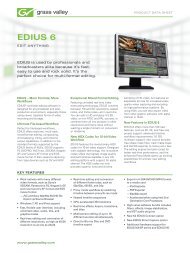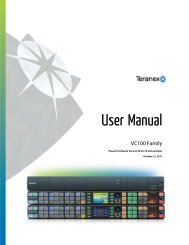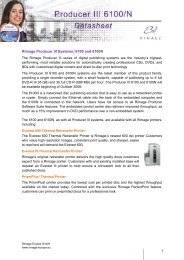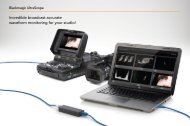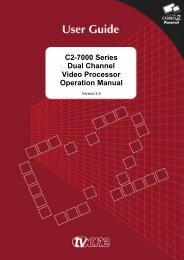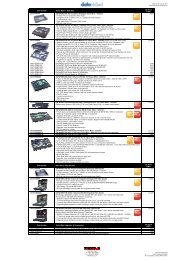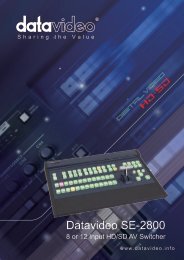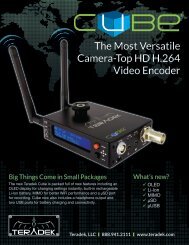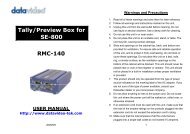ATEM Switchers Manual - Holdan.eu
ATEM Switchers Manual - Holdan.eu
ATEM Switchers Manual - Holdan.eu
You also want an ePaper? Increase the reach of your titles
YUMPU automatically turns print PDFs into web optimized ePapers that Google loves.
128<br />
Using Blackmagic UltraScope<br />
7. Picture Display<br />
The Picture Display is a handy confidence monitor so you can see the video that is being received<br />
by Blackmagic UltraScope. The Picture Display has three settings: COLOR, B/W (black & white) and BLUE<br />
(Blue Only).<br />
Set to COLOR or B/W depending on the needs of your facility. Black & white is popular for use in colorcorrection<br />
studios so clients don’t get confused when seeing multiple color displays, and not understanding<br />
which color display is the correct, color-calibrated display. You may wish to select B/W so there is only a<br />
single, calibrated, color display in the room. The black & white display can also provide a useful visual<br />
reference.<br />
Blue Only is used with color bar test signals for setting hue on playback decks. When adjusting hue, make<br />
sure all the blue bars are a constant brightness to attain the correct hue level.<br />
Blue Only can also be used for evaluating noise levels in cameras and telecines. Blue has the least amount<br />
of signal level, in a color video signal, and so is more susceptible to noise. The BLUE setting can provide a<br />
good way to check on noise levels in a video signal.<br />
The SDI and OPTICAL buttons are not used with <strong>ATEM</strong> Production <strong>Switchers</strong> which always use whatever<br />
video and audio is routed to Aux 1. These buttons are used with the dedicated Blackmagic UltraScope<br />
hardware which includes both SDI and optical fiber SDI connections.<br />
The Picture Display will also decode RP-188 HD and VITC SD timecode information, from the SDI video<br />
input signal, and display it on the right side of the display. If the timecode information is incorrect, check your<br />
deck to ensure it is outputting the correct timecode signal encoded as VITC or RP188.<br />
It is worth noting that some standard definition broadcast decks let you “re-stripe” the timecode track<br />
independently of the VITC, which was encoded as part of the image. This meant the VITC could not be<br />
changed without copying the video down another generation. Consequently some standard definition<br />
decks had different timecode in the VITC to the normal LTC track on the SDI video output. It is always worth<br />
checking master tapes if you think the displayed timecode is incorrect.<br />
Lastly, the video standard is displayed on the left side of the Picture Display, so you can verify the video<br />
standard, and confirm you’re monitoring the correct video feed.




